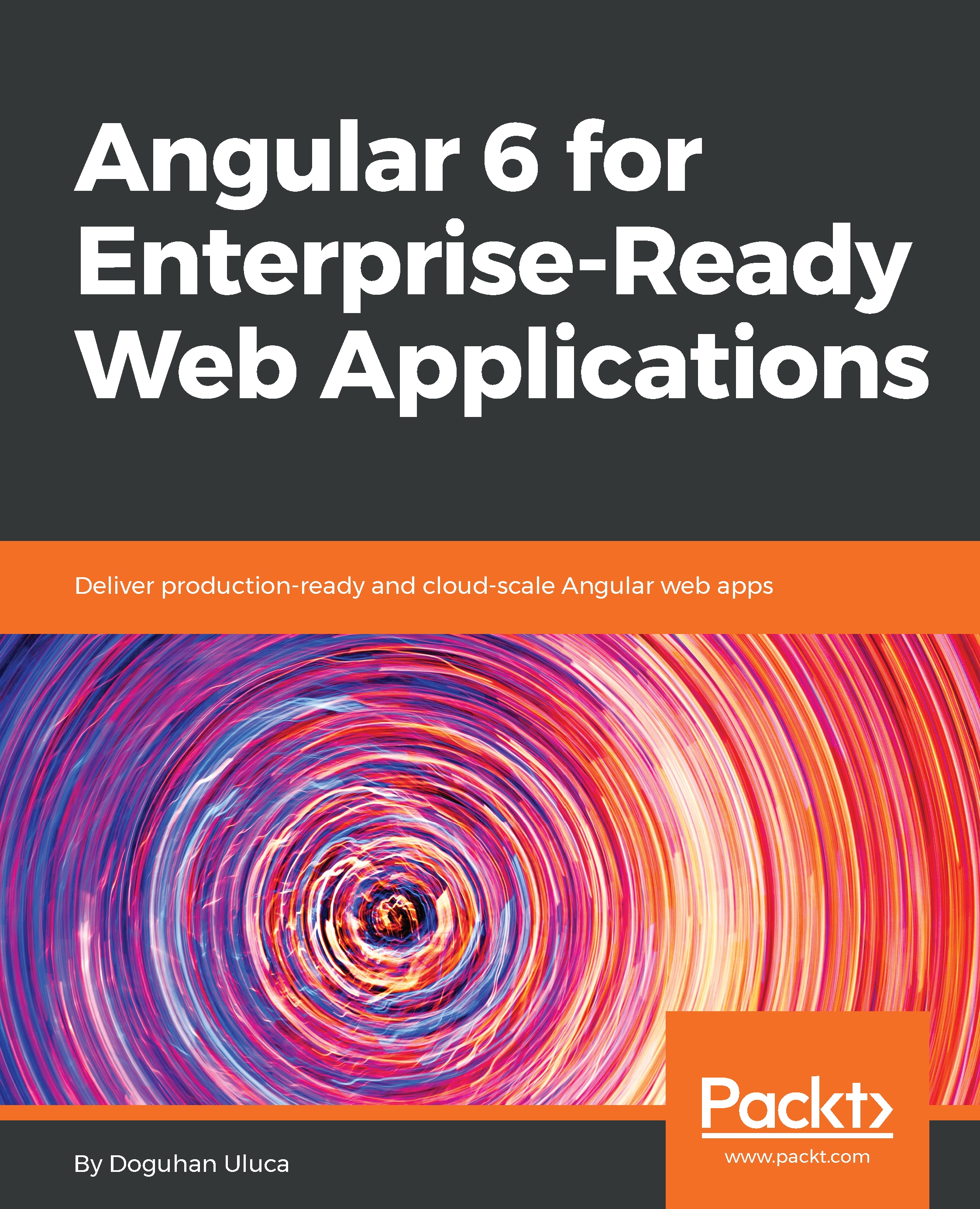A well-designed authentication workflow is stateless so that there's no concept of an expiring session. User's are free to interact with your stateless REST APIs from as many devices and tabs as they wish, simultaneously or overtime. JSON Web Token (JWT) implements distributed claims-based authentication that can be digitally signed or integration protected and/or encrypted using a Message Authentication Code (MAC). This means once a user's identity is authenticated through, let's say a password-challenge, they receive an encoded claim ticket or a token, which can then be used to make future requests to the system without having to reauthenticate the identity of a user. The server can independently verify the validity of this claim and process the requests without requiring any prior knowledge of having interacted...
-
Book Overview & Buying

-
Table Of Contents

Angular 6 for Enterprise-Ready Web Applications
By :

Angular 6 for Enterprise-Ready Web Applications
By:
Overview of this book
Angular 6 for Enterprise-Ready Web Applications follows a hands-on and minimalist approach demonstrating how to design and architect high quality apps.
The first part of the book is about mastering the Angular platform using foundational technologies. You will use the Kanban method to focus on value delivery, communicate design ideas with mock-up tools and build great looking apps with Angular Material. You will become comfortable using CLI tools, understand reactive programming with RxJS, and deploy to the cloud using Docker.
The second part of the book will introduce you to the router-first architecture, a seven-step approach to designing and developing mid-to-large line-of-business applications, along with popular recipes. You will learn how to design a solid authentication and authorization experience; explore unit testing, early integration with backend APIs using Swagger and continuous integration using CircleCI. In the concluding chapters, you will provision a highly available cloud infrastructure on AWS and then use Google Analytics to capture user behavior.
By the end of this book, you will be familiar with the scope of web development using Angular, Swagger, and Docker, learning patterns and practices to be successful as an individual developer on the web or as a team in the Enterprise.
Table of Contents (14 chapters)
Preface
 Free Chapter
Free Chapter
Setting Up Your Development Environment
Create a Local Weather Web Application
Prepare Angular App for Production Release
Staying Up to Date with Angular Updates
Enhance Angular App with Angular Material
Reactive Forms and Component Interaction
Create a Router-First Line-of-Business App
Continuous Integration and API Design
Design Authentication and Authorization
Angular App Design and Recipes
Highly-Available Cloud Infrastructure on AWS
Google Analytics and Advanced Cloud Ops
Other Books You May Enjoy
